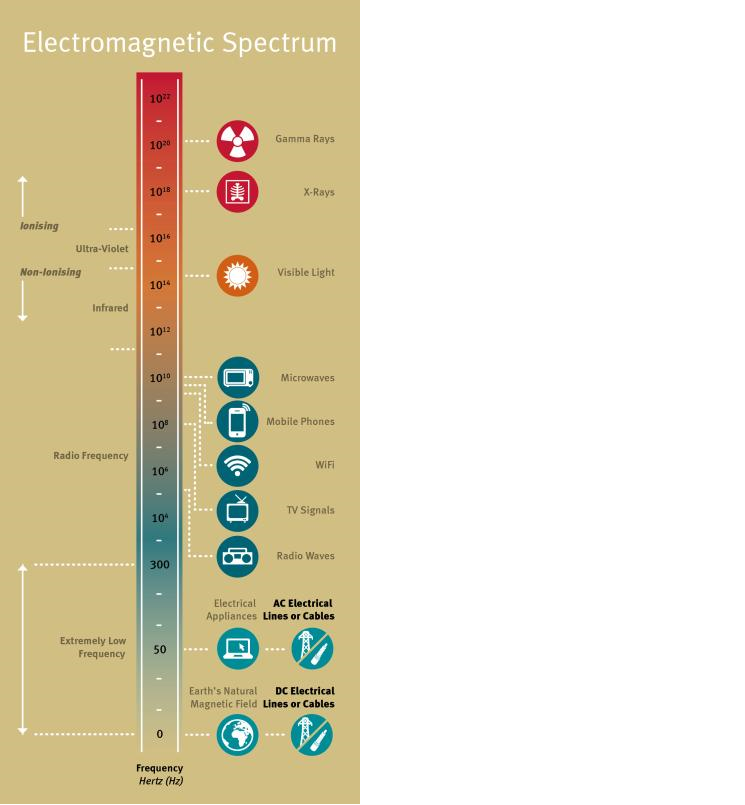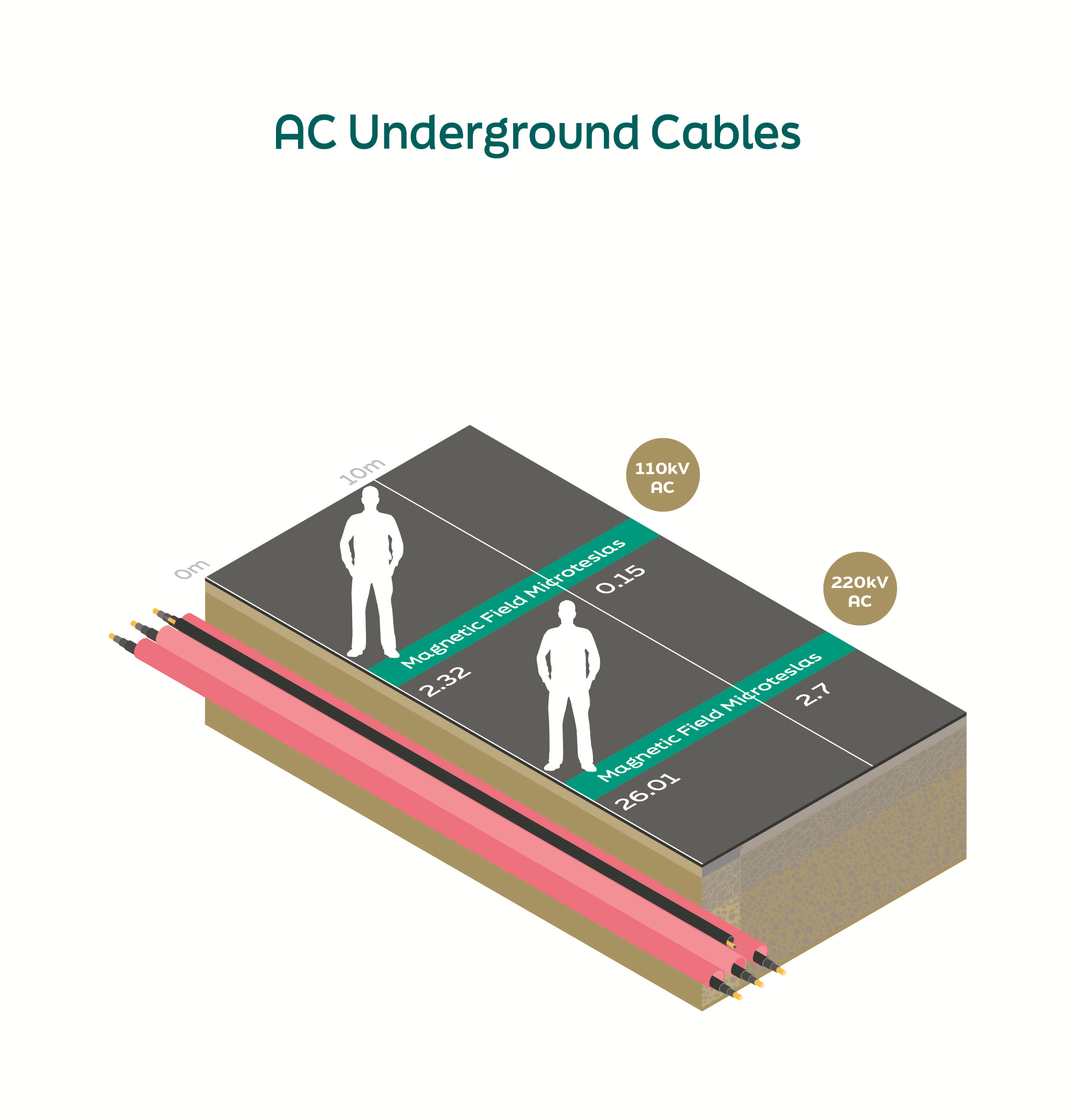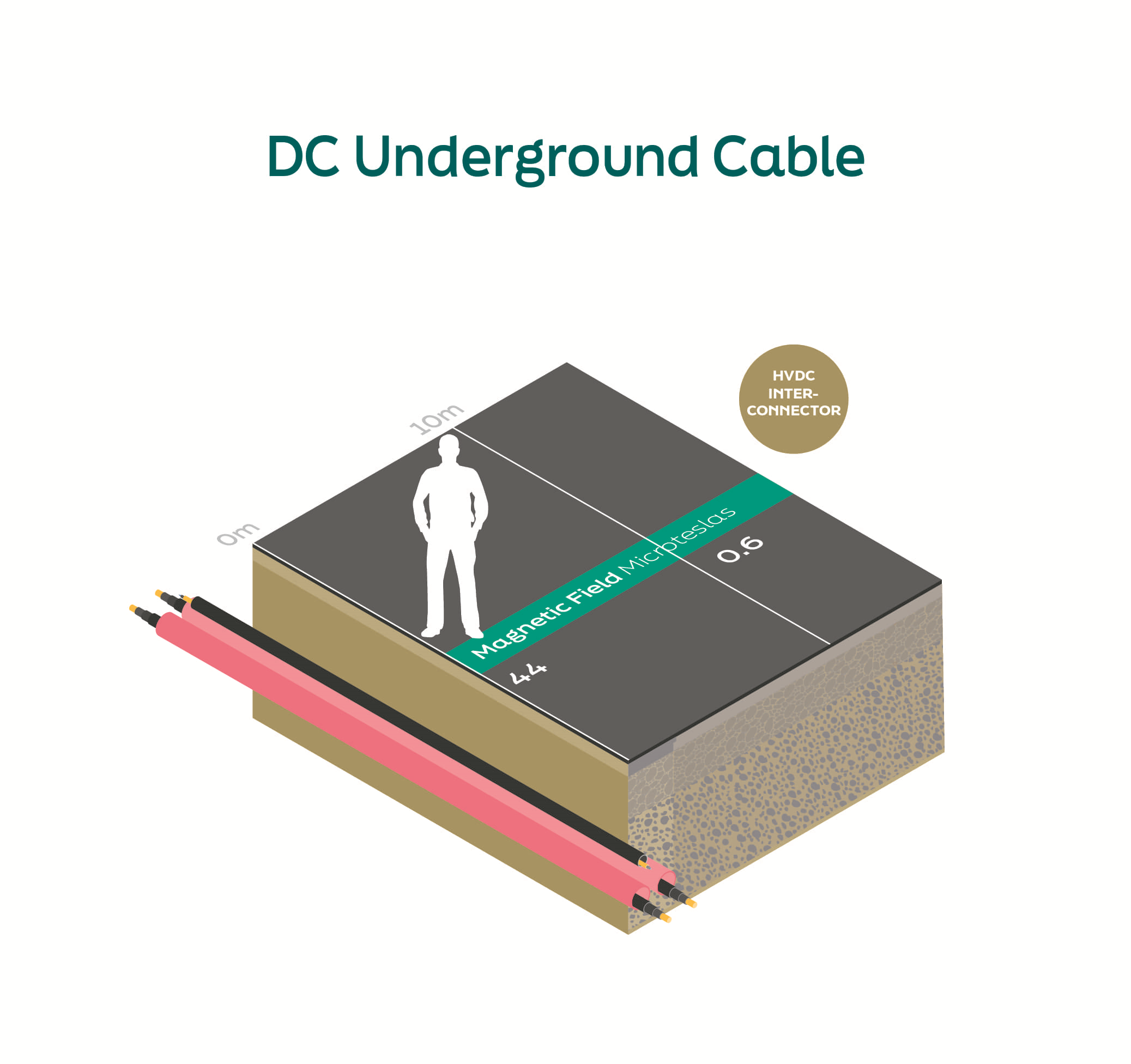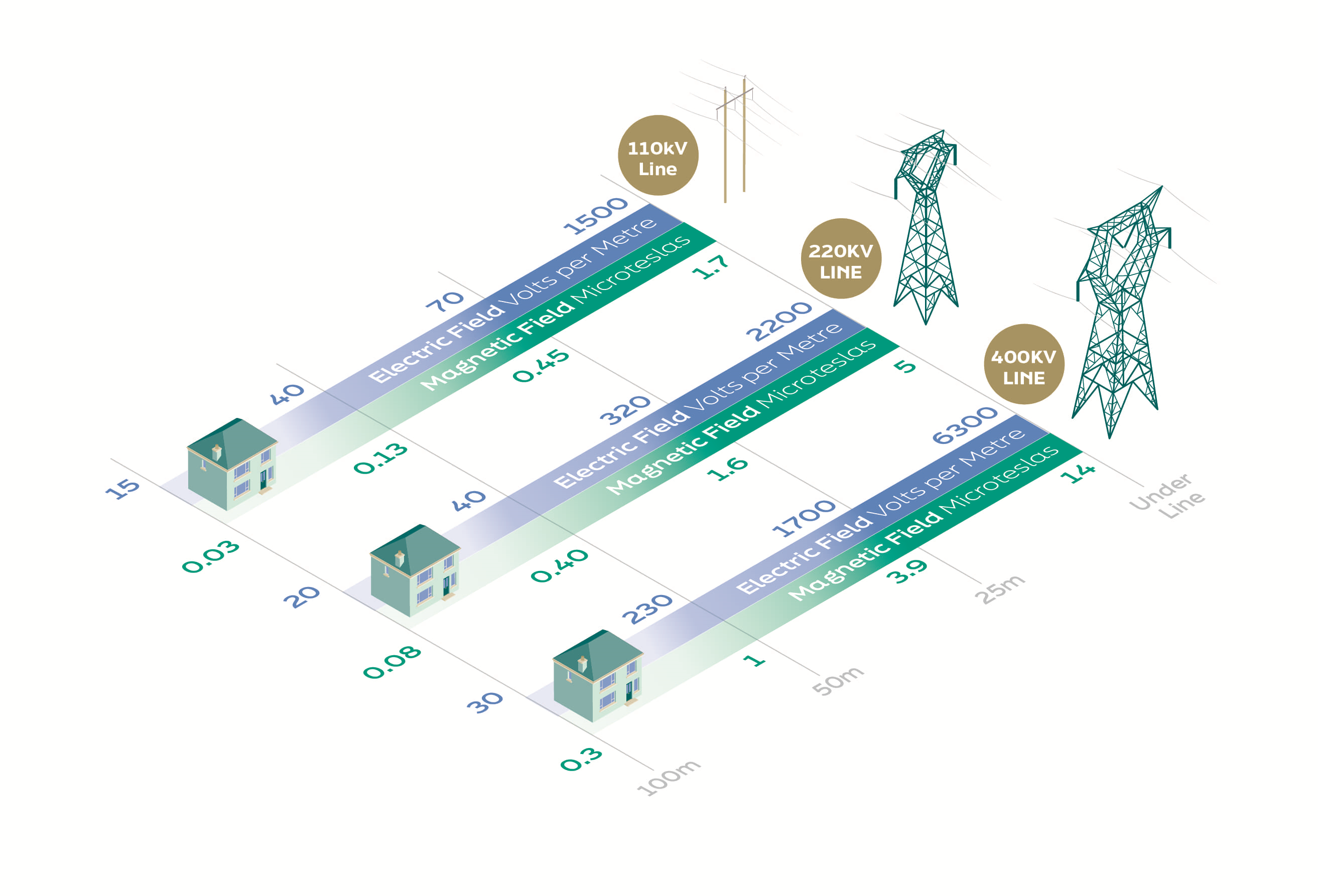Safety Standards
While the grid is always developed to the highest of safety standards, we know some people are concerned about electric and magnetic fields (EMFs).
Electricity Safety
Across Ireland, we all need to use a lot of electricity in our daily lives. This requires EirGrid to transmit large amounts of electricity. When we do so, we must obey all laws, and meet all applicable health and safety standards.
The main safety risk with high voltage electricity transmission is accidental electrocution. This is a very low risk. To protect against this, we send this energy on wires carried by poles and pylons or buried underground in cables.
Some people have concerns about electric and magnetic fields (EMFs) near electricity lines and cables. Let's look at some facts and research about EMFs.
Electromagnetic Spectrum

Are EMFs the Same as Radiation?
The fields from electricity are fundamentally different from x-ray and gamma ray radiation. Although they are all forms of electromagnetic energy, there are important differences.
Radiation refers to electromagnetic energy at the ionising end of the spectrum. This kind of energy is capable of breaking bonds in molecules. This damages our basic biological building blocks – the DNA of our cells.
Only the high-frequency portion of the electromagnetic spectrum is ionising. This includes x-rays and gamma rays. EMFs from the electricity grid are non-ionising. This means they do not have enough energy to cause damage to human or animal cells in the same way ionising radiation.
Some people fear that EMFs could cause cancer in the same way that ionising radiation does. But the scientific consensus is that there is no credible way to explain how this could happen.
Why Do Some People Say EMFs are Harmful?
The most common concern about EMFs from power lines is a fear that magnetic fields could be associated with childhood leukaemia.
This was first suggested in a 1979 epidemiological study. These kinds of studies look at patterns of disease in populations. While they cannot prove a cause of disease, they can suggest statistical associations to investigate.
Because of the 1979 study, power lines and childhood cancers have been thoroughly investigated. These investigations included more epidemiological research, as well as laboratory studies.
Epidemiological Studies
There have been mixed results from subsequent epidemiological studies. Some have reported associations with magnetic fields; others have not. Recent studies conducted in the UK, France, Denmark and the US have not established associations between a home near transmission lines and childhood leukaemia.
Laboratory Studies
Crucially, laboratory studies have found no connection and no explanation of how power lines could have this effect. Based on this history and its own review of research, the World Health Organization states there is no evidence to conclude that exposure to low-level EMFs is harmful to human health.
This issue has become emotive and controversial for some, as none of us can see EMFs or easily control our exposure to them. There are campaigners who believe any possibility of risk – even unproven – needs action. There are also some people with health problems that they believe are caused by power lines.
However, anybody who lives in the modern world has widespread exposure to extremely low-frequency EMFs. This is the case whether or not they live near power lines.
EMF levels from underground cables
We operate the grid to stringent safety recommendations. National and international agencies make these recommendations independently.
Several recommendations come from the International Commission for Non-Ionizing Radiation Protection (ICNIRP). This is an independent body, funded by public health authorities around the world. They've investigated EMF safety for decades, and give guidance on safe exposure.
The images below show the EMF levels produced by each cable type, based on the typical levels. This can vary based on the amount of power carried by the cable.
Underground AC

Figures shown above are typical. Magnetic field levels will vary for each installation, and will vary depending on how much power is carried in the cable.
See the infographic on the electromagnetic spectrum for the level of the magnetic field produced by alternating current (AC) underground power cables. Compare these figures to the ICNIRP basic restrictions for exposure to alternating magnetic fields, like those emitted by AC cables: 360 microteslas.
Underground DC

Figures shown are typical. Magnetic field levels will vary for each installation, and will vary depending on how much power is carried in the cable.
See the infographic on the electromagnetic spectrum for the level of the magnetic field produced by direct current (DC) underground power cables
Compare these figures to the ICNIRP basic restrictions for exposure to static magnetic fields, like those emitted by DC cables: 400,000 microteslas.
What EMFs do overhead power lines produce?
Overhead Lines

Figures shown above are typical. Measured EMFs will vary for each installation, and magnetic fields will vary depending on how much power is carried on the line.
ICNIRP, an independent body, funded by public health authorities around the world, has investigated the safety of EMFs for decades, and provides guidance on safe levels of exposure. The HSE recommends that ICNIRP guidelines are followed to protect the health of the public. We design the electricity network to make sure that public exposure to EMFs complies with these guidelines.
This diagram shows the levels of EMFs measured near power lines at various distances. As you can see, levels of EMFs near electricity infrastructure drop considerably as you move away from the lines.
Compare these figures to the ICNIRP basic restrictions for exposure: 9000 volts per metre and 360 microteslas.